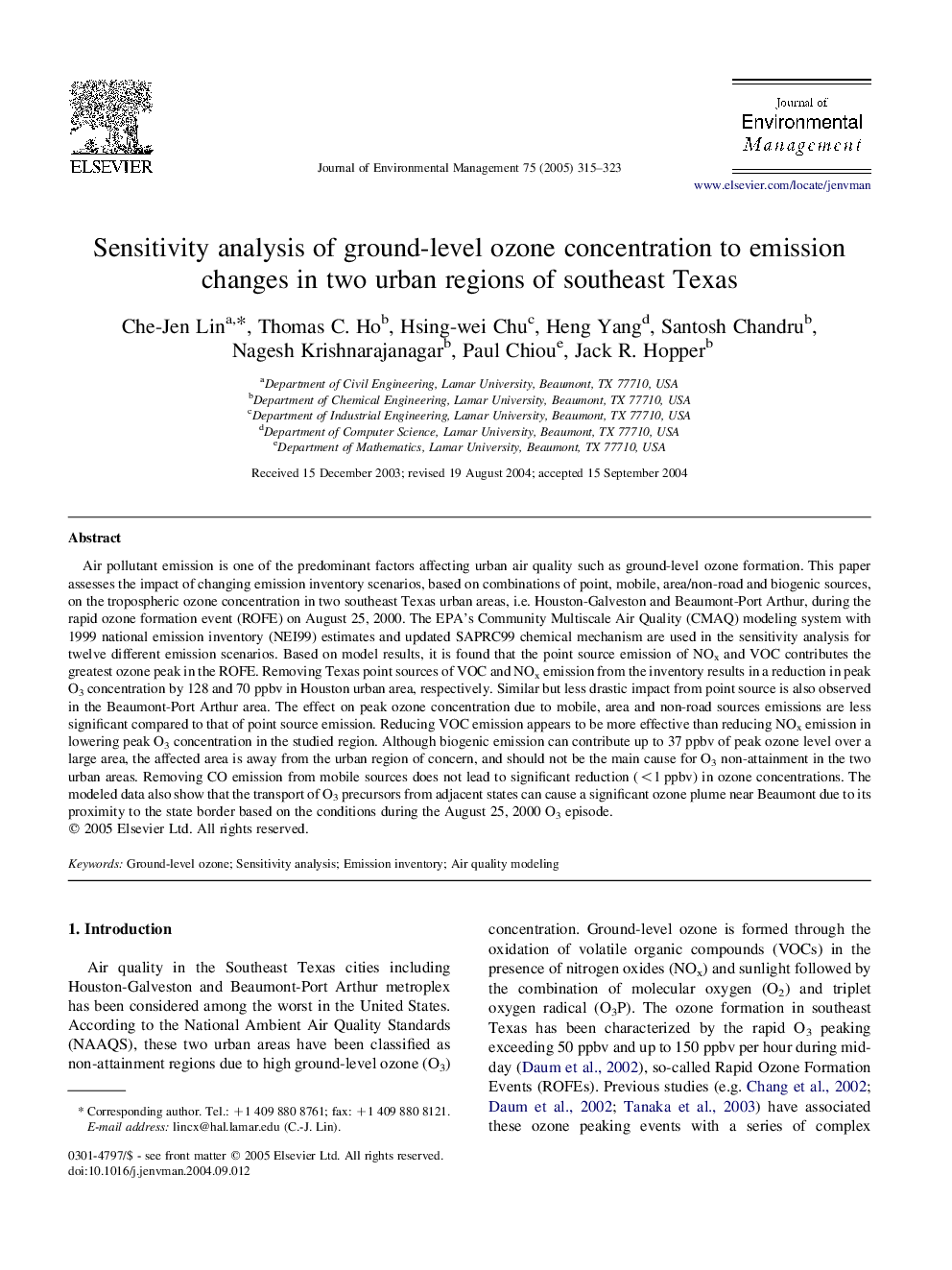| Article ID | Journal | Published Year | Pages | File Type |
|---|---|---|---|---|
| 10505892 | Journal of Environmental Management | 2005 | 9 Pages |
Abstract
Air pollutant emission is one of the predominant factors affecting urban air quality such as ground-level ozone formation. This paper assesses the impact of changing emission inventory scenarios, based on combinations of point, mobile, area/non-road and biogenic sources, on the tropospheric ozone concentration in two southeast Texas urban areas, i.e. Houston-Galveston and Beaumont-Port Arthur, during the rapid ozone formation event (ROFE) on August 25, 2000. The EPA's Community Multiscale Air Quality (CMAQ) modeling system with 1999 national emission inventory (NEI99) estimates and updated SAPRC99 chemical mechanism are used in the sensitivity analysis for twelve different emission scenarios. Based on model results, it is found that the point source emission of NOx and VOC contributes the greatest ozone peak in the ROFE. Removing Texas point sources of VOC and NOx emission from the inventory results in a reduction in peak O3 concentration by 128 and 70Â ppbv in Houston urban area, respectively. Similar but less drastic impact from point source is also observed in the Beaumont-Port Arthur area. The effect on peak ozone concentration due to mobile, area and non-road sources emissions are less significant compared to that of point source emission. Reducing VOC emission appears to be more effective than reducing NOx emission in lowering peak O3 concentration in the studied region. Although biogenic emission can contribute up to 37Â ppbv of peak ozone level over a large area, the affected area is away from the urban region of concern, and should not be the main cause for O3 non-attainment in the two urban areas. Removing CO emission from mobile sources does not lead to significant reduction (<1Â ppbv) in ozone concentrations. The modeled data also show that the transport of O3 precursors from adjacent states can cause a significant ozone plume near Beaumont due to its proximity to the state border based on the conditions during the August 25, 2000 O3 episode.
Related Topics
Physical Sciences and Engineering
Energy
Renewable Energy, Sustainability and the Environment
Authors
Che-Jen Lin, Thomas C. Ho, Hsing-wei Chu, Heng Yang, Santosh Chandru, Nagesh Krishnarajanagar, Paul Chiou, Jack R. Hopper,
